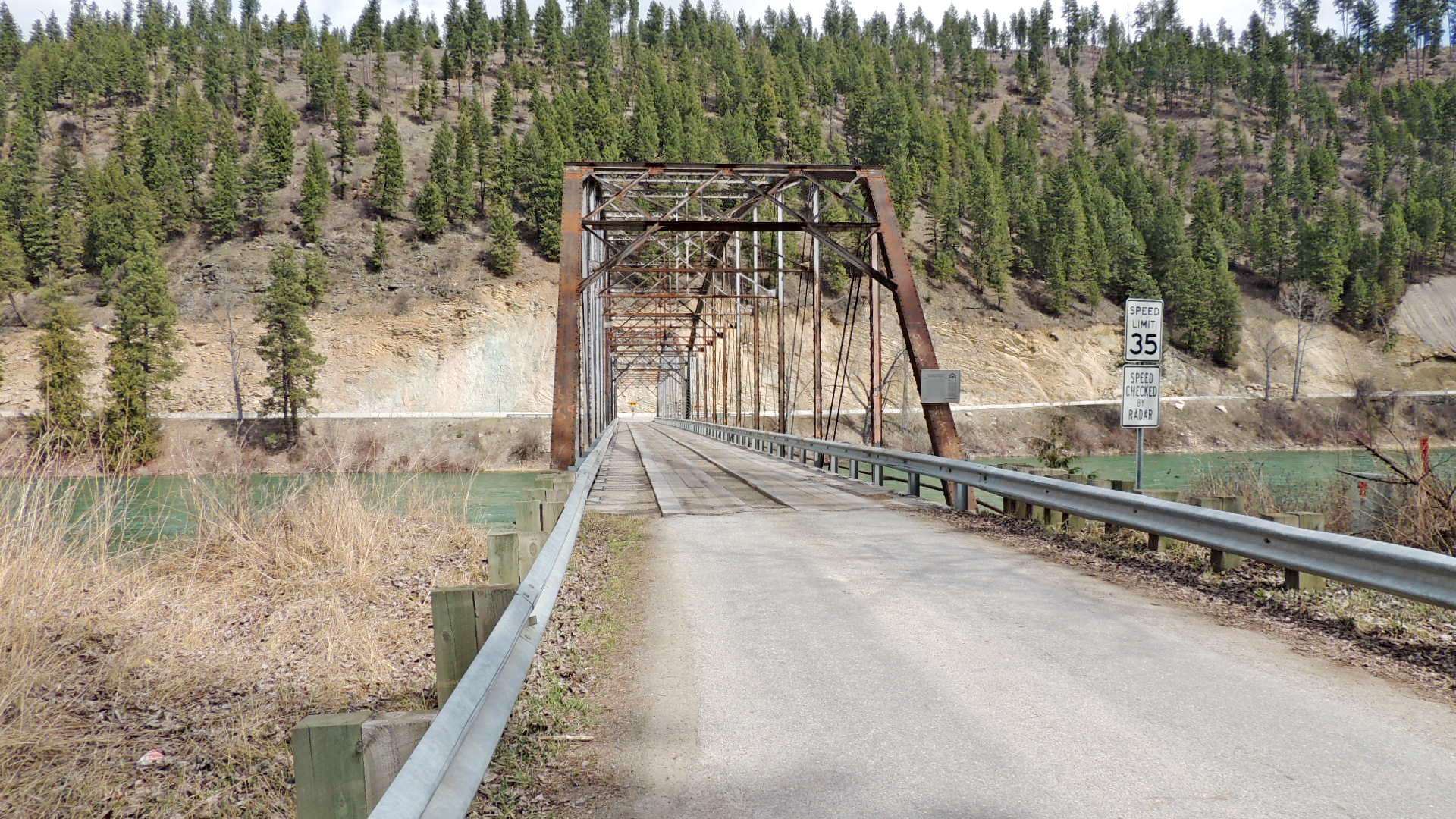|
 Theodore Roosevelt Memorial Bridge - Troy, MT Posted by:  T0SHEA T0SHEA
N 48° 28.181 W 115° 53.306
11U E 582161 N 5369102
December 17, 1912 was the day the first car crossed this historic bridge, giving people on the east side of the Kootenai River easier access to the town of Troy. Of three bridges built in the Kootenai Valley at the time, this is the only one extant.
Waymark Code: WMV73G
Location: Montana, United States
Date Posted: 03/07/2017
Views: 4
The Person:
Environmental Activist, Warrior, Governor, Military Leader and Nobel Peace Prize winner, Theodore "Teddy" Roosevelt became the 26th U.S. president in 1901 at the age of 42, then the youngest man ever to become president. Born in New York City on October 27, 1858, Roosevelt graduated magna cum laude from Harvard College and immediately enrolled at Columbia Law School. After a brief stay in law school he joined the New York State Assembly representing New York City - the youngest to do so.
After being defeated for the New York City mayorship, Roosevelt continued his political career as a civil service commissioner, then New York City police commissioner, then Assistant U.S. Navy Secretary under President William McKinley. Following his legendary charge up San Juan Hill in the Spanish-American War, he returned a war hero and was subsequently elected Governor of New York in 1898.
Teddy's ascendancy to the presidency came about in a most unusual fashion:
Roosevelt's progressive policies in New York ran him afoul of his own party, so Republican Party bosses plotted to quiet him by naming him on the McKinley ticket in the thankless post of vice president. However, after his re-election in 1901, President McKinley was assassinated. At age 42, Theodore "Teddy" Roosevelt became the youngest man to assume the U.S. presidency.
From Biography Dot Com
Roosevelt was an historian, a biographer, a statesman, a hunter, a naturalist, an orator and generally conceded to have been a pretty good president. His prodigious literary output includes twenty-six books, over a thousand magazine articles, thousands of speeches and letters. Read more of the story of his presidency HERE.
The Place:
Today a National Historic Place, this bridge was just the Troy Bridge when built. Some time later it was renamed the Theodore Roosevelt Memorial Bridge. The town of Troy seems to have had a special place in the heart of Teddy Roosevelt, as he visited the town after his presidency ended, leaving his initials on the front wall of Troy's town hall. Well cared for by the town, the initials remain there to this day.
Following is Montana's own take on the bridge.
Before Libby Dam tamed the river, the Kootenai became "a death dealing torrent in high water time." Raging currents regularly shut down ferries, stranding supplies intended for logging and mining camps and keeping north side children from their school across the river. The lack of roads and bridges also stymied economic development. Proper infrastructure, area boosters claimed, would bring both more settlers and automobile tourists en route to Glacier National Park. Voters concurred, passing a $125,000 bond measure in 1911 to improve roads and construct bridges at Libby, Troy, and Rexford. The Coast Bridge Company of Portland, Oregon, won the contract for all three bridges and within weeks a crew of engineers arrived in Libby. Work stopped, however, when Eureka residents, possibly angry over not getting their own bridge, filed an injunction to halt construction. Bridge and road contracts provided notorious opportunities for graft, but in this case the court found no wrongdoing. Construction resumed in June, and on December 17, 1912, the Troy Bridge (later renamed after President Theodore Roosevelt) opened to traffic. "The bridge is the best of its kind," crowed a local newspaper. "Two spans, with a middle pier, and is perfect in every respect." In fact, the bridge's Parker through-truss design was well-suited for the location. The rigid triangle trusses provided the structural stability needed to span the wide river, and the pre-manufactured rolled steel beams made on-site assembly relatively simple. Of the three Kootenai valley bridges to share the standardized design, this is the only one still standing.
From the Montana History Wiki

Year it was dedicated: ca 1920

Location of Coordinates: At the bridge

Type of place/structure you are waymarking: Bridge

Related Web address (if available): Not listed

|
Visit Instructions:- Please post a comment and distinct photo.
- A "visited" only remark will be deleted.
- A "visited" remark by the 'Waymark Owner' at the time of posting is not appreciated and won't be accepted. If visiting at another time a "Visit" would be acceptable.
|